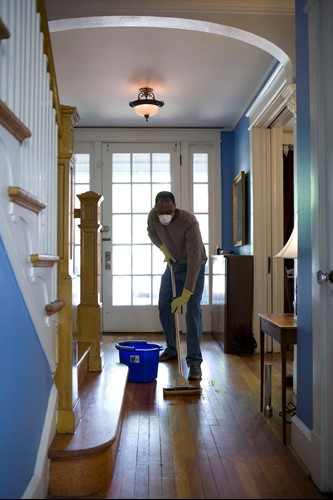The Safe Ways to Control Pests in Homes with Toddlers
Traditionally, pests have been controlled through the use of pesticides and toxic chemicals. Off-the-shelf pest control solutions can be bought in any hardware store, and these can be used in the home and some kinds in the garden.

There is now a growing awareness of the harm that some of these chemicals can cause. In 2018, one individual in the US sued Monsanto and Bayer. It was argued that repeated exposure to glyphosate which is contained in Roundup had caused the plaintiff’s cancer. He won and was awarded $300 million. Glyphosate continues to be used in pest control.
Fortunately, not all pest control methods are toxic. And if you are suffering from common household pests, and have a baby or a toddler in the home, you will want to know the safest methods available.
Is it safe to use pest control with toddlers in the house?
The general answer to this question is a yes, depending on what methods are used. Babies and toddlers are more at risk when exposed to pesticides because they are still developing.
It is believed that exposure to certain chemicals contained in pesticides could cause behavioural problems and possibly childhood cancer.
Pest control companies now are adopting many non-toxic methods to eliminate the common pest problems that homeowners face. If you decide to use professional pest control then search for one that clearly states what approach they take, and what chemicals if any are used.
A search on Google for pest control Waltham Forest will elicit results for companies that avoid harsh chemicals in their treatments.
What should you avoid?
The problem with buying off-the-shelf products is that it can be hard to understand what chemicals might be contained within, and what the dangers are. Labels should be marked ‘danger’ or ‘warning’ next to certain ingredients. However, the EPA in the US still insists that glyphosate is not carcinogenic.
Here are some things worth investigating and understanding fully before using.
Chemicals
All chemicals have the potential to be harmful depending on the exposure level and dose. But, many chemicals are harmless when used in small amounts. Ask your pest control expert what chemicals they plan to use and whether they are toxic.
The previously mentioned glyphosate has been linked to cancer but only through lengthy exposure. However, it can be found in many places. As a parent, you will be aware that choosing the right nappy can be difficult. You may be surprised to find that research shows that many dangerous chemicals can be found in nappies, including glyphosate.
Diatomaceous Earth
This powder is largely made up of silica and can be used in the control of bed bugs. To use it, the powder must be spread around rooms where bed bugs have been infested.
This means that there will be powder lying around that a child could put their fingers in, and potentially ingest. Yet, DE is not considered harmful to children if Food Grade Diatomaceous Earth is used. The best course of action would be to keep toddlers out of rooms being treated just to err on the side of caution.
Fumigation
If you’ve got to the point where a house needs to be fumigated then you and your children will all have to leave. No one should re-enter the home until the fumigator has given clearance. This could be up to 72 hours to ensure the family’s safety.
Asthma
Children need to be kept away from anywhere that has been treated with pesticides even in the garden, and pesticides can trigger asthma in children.
Ways to safely control pests with youngsters around
Heat treatment
Most pest control experts now use heat treatment for bed bugs. This safe treatment is non-toxic and effective. It uses no chemicals and when done properly is said to have a 100% success rate instantly.
Pest control services
The global pest control market was valued at $19.73 billion in 2019. This sector has been predicted to grow to $31.9 billion by 2027. This is due to a rise in pests, partly because of climate change.
In the UK, anyone involved with professional pesticides must hold a certificate to use them. The National Proficiency Tests Council provides certification for pest controllers. This means that any professional you hire should understand how to safely use pesticides, and advise you on different treatments.
A good pest controller will discuss all possible options with you, and answer your questions regarding the safety of your family.
Prevention
The best way to control pests safely is to not allow them in, to begin with. Sealing cracks, removing garbage regularly, and removing clutter, can make your home less attractive to pests. Putting food such as cereals in containers, and making sure there are no food sources will also help.
Treating pets
Some pets are great for toddlers, but those fluffy animals can bring pests into the home. Fleas are a common concern for cats and dogs, and chemical solutions such as Frontline can help. These treatments are safe to use around toddlers, but after application, your child should not be allowed to pet the animal until the solution has completely dried.
Always check the label of pet flea shampoo or tick treatment for safety precautions.
Summary
For a greener approach, all chemicals can be avoided in favour of using natural remedies. However, while baking soda, mint, and other household ingredients can help to ward off pests, sometimes you may need something stronger.
The safest way to perform pest control is to consult with a professional. They can explain all the options available, and will often use only non-toxic methods until all avenues have been exhausted. A licensed professional will understand your fears, and provide a solution that suits the problem and your family’s health.